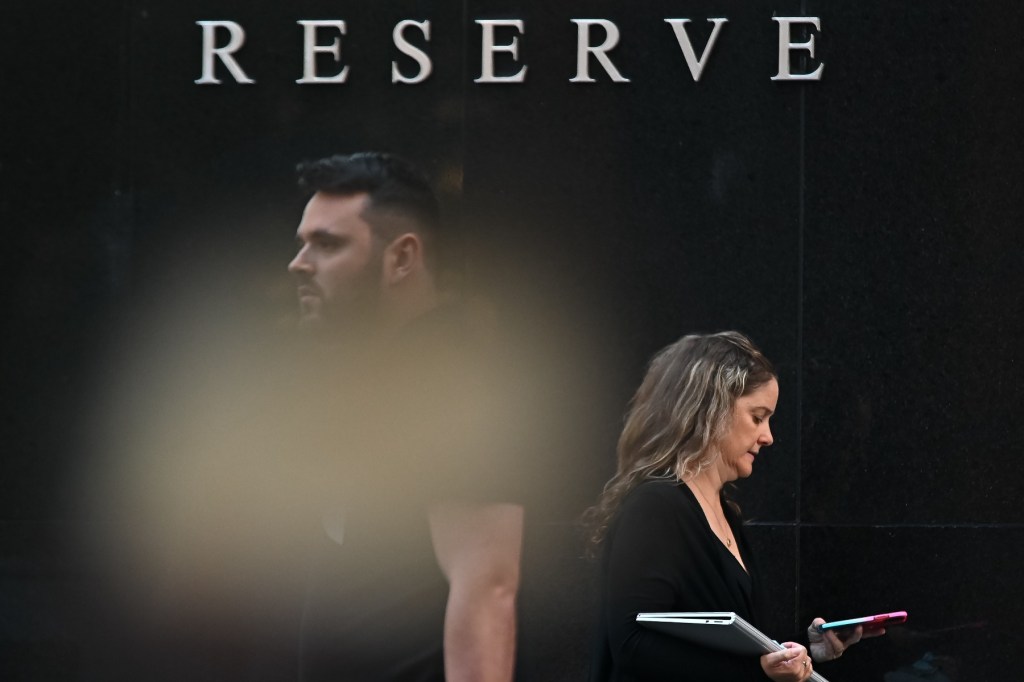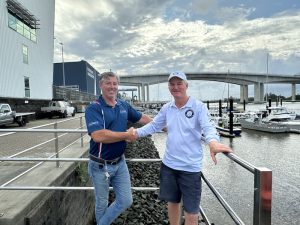Australia’s economy fares better than expected but still weakest since early 1990s

- by Admin
- September 4, 2024

Australia’s economy fared better than expected in the June quarter as government spending fuelled growth. On a per capita basis, though, activity shrank for a record sixth quarter in a row.
Gross domestic product grew 1% compared with the June quarter of 2023, the Australian Bureau of Statistics said on Wednesday. That rate compared with 0.9% predicted by economists and 1.1% previously reported by the ABS for the March quarter.
Taking the 2023-24 financial year as a whole, the economy expanded 1.5%, or the weakest since the 1991-92 year, excluding the 0.3% contraction during the 2019-20 Covid-disrupted year, the ABS said.
On a quarterly basis, the economy grew 0.2%, in line with forecasts by economists and the ABS’s revised outcome for the March quarter growth.
Australia’s swelling population has masked some of the pain caused by 13 interest rate rises by the Reserve Bank in the past 28 months. Per capita GDP contracted 0.4% in the June quarter, extending a record retreat that began at the start of 2023 in data that goes back to 1973.
The treasurer, Jim Chalmers, said last weekend higher interest rates were “smashing the economy”. The RBA governor, Michele Bullock, though, made it clear last month a cut in the key interest rate was “not aligned” with the central bank board’s present thinking until annual inflation was on a more certain track towards its 2%-3% target.
June quarter growth would have been weaker without an increase in spending by federal, state and local governments. That extra demand shored up ongoing strong employment growth but it also made near-term interest rate cuts less likely.
Public demand increased 1.4% and contributed 0.3 percentage points to quarterly growth while household spending eased 0.2% and trimmed 0.1 percentage points from that growth pace.
Investors have been more focused on steep falls in overseas markets overnight after weak economic figures in the US. The Australian dollar, though, rose modestly after the GDP figures landed, nudging back above the 67 US-cent mark, while stocks trimmed some of their falls of 2% during morning trade.
Among the states, New South Wales was the clear laggard, with final demand falling 0.4% as all other states posted a rise, including 0.9% gains in South and Western Australia. Public investment in NSW shank 3.8% for the quarter, also bucking the national trend.
Australia’s growth compared with an annual pace of expansion of 3.1% in the June quarter in the US, according to the Economist data. The Eurozone’s growth pace was 0.6%, while Britain’s economy expanded 0.9% and Japan’s contracted 0.8%.
Katherine Keenan, the head of national accounts at ABS, said consumer spending had been boosted during the March quarter by music and other events, a result reversed in the June quarter.
“The strongest detractor from growth was transport services, particularly reduced air travel. This was the first fall for this series since the September 2021 quarter,” she said.
after newsletter promotion
End-of-year sales, though, lifted spending on furnishings and household equipment by 4%, while consumers forked out 1% less on food and less on other groceries too.
“People are under a lot of pressure,” Chalmers told a media conference. “This is precisely why we are rolling out substantial cost of living help but in the most responsible way.”
His opposition counterpart, Angus Taylor, said the result “looks, feels, and smells like a recession. Labor has failed to manage inflation and has failed to manage the economy.”
“You cannot bring inflation down and grow the economy, when productivity is collapsing and the private sector in retreat,” Taylor said.
Total investment fell for a third quarter in a row, easing 0.1% in the June quarter. Private sector spending on new machinery and equipment fell 1.6%, partly offset by a pickup in the property sector boosting ownership transfer costs by 3.9%, the ABS said.
Sean Langcake, the head of macroeconomic forecasting for Oxford Economics Australia, said the economy lacked “a clear engine of growth”.
“Tight policy settings have successfully reined in demand, but inflationary pressures are yet to be completely tamed,” Langcake said. “Income tax cuts and consumer subsidies will aid momentum in the second half of the year. But any improvement in activity will be unspectacular.”
Krishna Bhimavarapu, APAC economist at State Street Global Advisors, said the GDP figures “should at the very least lead the RBA to make a dovish pivot, considering how uncertain they were during the last meeting”.
“We still look for the first [interest] rate cut in November as headline CPI could ease to around 3% in [the September quarter],” Bhimavarapu said.
The Latest News
-
December 25, 2024‘Stops riots outside the Members Stand’: Aussie skipper backs cult hero for big MCG return
-
December 25, 2024Sam Konstas is the right player at the right time for Australia. Here’s why
-
December 25, 2024Christmas at the ‘G! Aussie stars and family lap up big day
-
December 25, 2024‘They’re the idiots who picked me’: Aussie skipper’s hilarious message to relieve pressure on new opening sensation
-
December 25, 2024Boxing Day NFL on Netflix: What time is Mariah Carey performing in Australia? | Sporting News Australia



